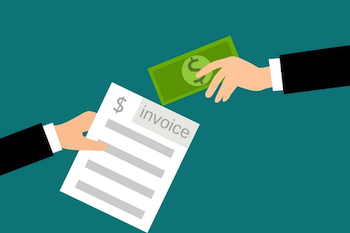Cash flow 101 for small business owners
What is cash flow?
 Cash flow refers to the money you have coming into your business and the money going out. If you have more coming in than going out, you’re winning – but there’s more to it than that.
Cash flow refers to the money you have coming into your business and the money going out. If you have more coming in than going out, you’re winning – but there’s more to it than that.
Cash inflow is the payment you receive for your goods and services. It also refers to any interest earned or financial investment made into the business. It’s important because it later becomes payment for the things that make your business run, like stock, staff, rent and other operating expenses.
Cash outflow is all the expenses that keep your business running. It’s the money you spend on paying bills, salaries and invoices; for example, rent, electricity, supplier payments, loan repayments, wages, taxes and marketing costs. It also includes any investment you make back into the business.
When we talk about positive cashflow it means inflow is greater than outflow and conversely, negative cashflow means you are paying more money than what you’re making. Naturally, positive cash flow is preferable, however there may be times when your business can survive in a negative cashflow position but planning to accommodate this is crucial.
Why is cash flow important?
Cash flow is the lifeblood of your business. Even if your business is profitable you can still struggle to pay the bills if you are cash flow negative. This is why seemingly successful businesses can fail.
Managing cash flow
To stay cash flow positive, the easiest thing to do is to earn more than you spend. Should be easy, right? Here’s what else you can do to help:
- minimise your expenses (and review them monthly or at least annually)
- encourage repeat business (it’s cheaper to have existing customers come back for more than it is to find new customers)
- invoice quickly and consider a shorter payment term
- don’t accept late payments (and consider offering incentives for prompt payments)
- when paying invoices, unless there is a discount offered, use the payment term to the fullest
- plan for seasonal fluctuations
- have a budget and stick to it.
Organisation and planning
Small businesses don’t like surprises. That’s why it’s important to keep a close eye on all aspects of your business’s finances.
Cash flow forecasting is a great way to understand where your working capital is at any given time. It is a projection of the flow of cash over a period of time, usually on a monthly basis over a 12-month period. It is a summary of the cash banked, the payments made, and the resultant effect on your bank balance. We recommend performing a cash flow forecast annually as a matter of course.
Finally, all businesses have peaks and troughs. It’s important to build up some cash reserves when you can. That way you won’t have to borrow when your business can least afford it. If you know your numbers then you’ll know how much money your business needs to survive. Aim to put aside at least enough to cover three-months. This will help your business survive if cash gets tight.
Find out more on reducing your business overhead costs.
Share this article:
- Business finance - borrowing the money
- Reducing business overhead costs
- End of financial year checklist
- Making the most of small business downtime
- Using the bank to arrange business finance
- Cash flow for small business owners
- Know your numbers for business success
- Why Buy a Commercial Property for Your Business
- Spring cleaning your business
- Financing a franchise, what the bank wants
- Financial tips for small business owners
- 3 tax considerations when purchasing a business
- Cashflow forecasts and liquidity
- Left Brain Right Brain, Financial Performance
- Using accounts payable to your advantage
- Cash flow financing or factoring finance
- Cloud commerce for business
- Avoid cyber attacks on your business
